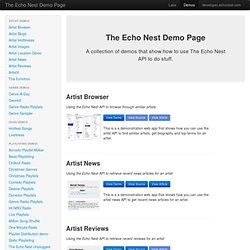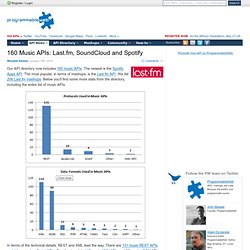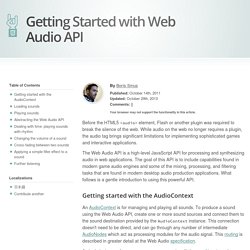

API – Métadonnées – Musique – Music Story Pro. Hurl.it - Make HTTP requests. The Echo Nest Demo Page. Artist Browser Using the Echo Nest API to browse through similar artists This is a a demonstration web app that shows how you can use the artist API to find similar artists, get biography and top terms for an artist.

Artist News Using the Echo Nest API to retrieve recent news articles for an artist This is a a demonstration web app that shows how you can use the artist news API to get recent news articles for an artist. Artist Reviews Using the Echo Nest API to retrieve recent reviews for an artist This is a a demonstration web app that shows how you can use the artist reviews API to get recent reviews for an artist. Artist Blogs Using the Echo Nest API to retrieve recent blog posts for an artist This is a a demonstration web app that shows how you can use the artist blogs API to get recent blog posts for an artist. Artist Hotttnesss See the top hotttest artists for any genre Song Hotttnesss See the top hotttest songs on the web Liveliness Artist Images Basic Playlisting We are doing it Live!
Genre Radio. Music Continues To Follow The Sound Of Developers ⚙ Co. Play Sound on :hover. Audio5js - The HTML Audio Compatibility Layer. 160 Music APIs. Our API directory now includes 160 music APIs.

The newest is the Spotify Apps API. The most popular, in terms of mashups, is the Last.fm API. We list 206 Last.fm mashups. Below you’ll find some more stats from the directory, including the entire list of music APIs. In terms of the technical details, REST and XML lead the way. The most common tags within music are 26 social music APIs, 18 music events APIs and 16 music search APIs On the mashup side, we list 460 music mashups. For reference, here is a list of all 160 music APIs. 5gig API: Concert listing service 7digital API: Music downloads store 8tracks API: Music playlist creation service. Ubuntu Studio. Getting Started with Web Audio API. Before the HTML5 <audio> element, Flash or another plugin was required to break the silence of the web.

While audio on the web no longer requires a plugin, the audio tag brings significant limitations for implementing sophisticated games and interactive applications. The Web Audio API is a high-level JavaScript API for processing and synthesizing audio in web applications. The goal of this API is to include capabilities found in modern game audio engines and some of the mixing, processing, and filtering tasks that are found in modern desktop audio production applications.
What follows is a gentle introduction to using this powerful API. Getting started with the AudioContext An AudioContext is for managing and playing all sounds. A single instance of AudioContext can support multiple sound inputs and complex audio graphs, so we will only need one of these for each audio application we create. The following snippet creates an AudioContext: Loading sounds Playing sounds full source code Volume:
How to Create an Audio Player in jQuery, HTML5 & CSS3 [Tutorial] Topic: jQuery / CSS3Difficulty: Intermediate / AdvancedEstimated Completion Time: 30 mins Today’s tutorial we will code an Audio Player from Impressionist UI by Vladimir Kudinov.
![How to Create an Audio Player in jQuery, HTML5 & CSS3 [Tutorial]](http://cdn.pearltrees.com/s/pic/th/create-player-designmodo-28185551)
We will code it with CSS3 for the styling and the “MediaElement.js” for the functionality. MediaElement.js is a HTML5 audio and video player that also works for older browsers using Flash and Silverlight to mimic the HTML5 MediaElement API. Step 1 – Downloading MediaElement.js First we need to download the “MediaElement.js” script and extract it. Flashmediaelement.swfmediaelement-and-player.min.jssilverlightmediaelement.xap Then copy all these three files to the same directory, I will copy for my “js” folder. Step 2 – HTML Markup Now, we need to link to the jQuery Library, we can host it locally or use the one hosted by Google. To create the player we will add a <div> width the class “audio-player”.
To finish we need to add this code before the ending of the </body> tag. Step 3 – Container Styles Conclusion. Local_audio_visualizer. Jussi-kalliokoski/audiolib.js. The Drumlet" by Epic Agency.